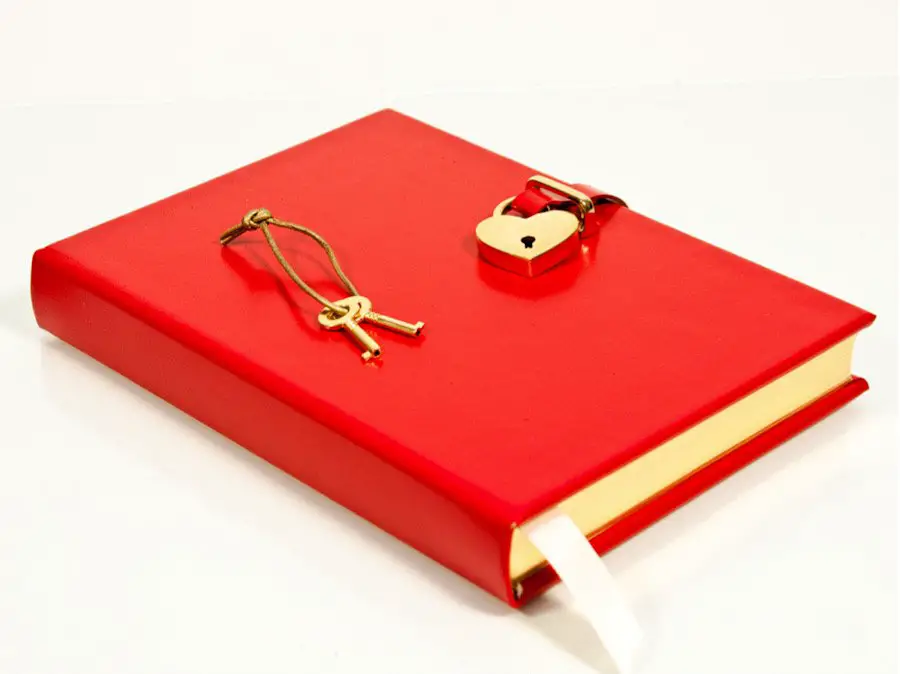When you’re feeling overwhelmed, you likely feel out of control and like you aren’t sure what’s happening in your life. A bullet journal for stress relief works by freeing up your mental space, creating a system that you trust to help you get things done, and makes life feel a lot more manageable.
While some people are loquacious writers who enjoy long recaps in their bullet journals, one of the beauties of the bullet journaling system is that it is accessible to everyone. If you want to write two words, that works here. A bullet journal is a way to organize your thoughts and allows you to do so briefly.
A bullet journal can help with stress relief in two main ways. First, it lets you unload all the thoughts running on repeat in your mind onto the paper. Second, it allows you to let those thoughts go without feeling anxious or guilty because you know that you will check that journal later and pick the thoughts up at the appropriate time.
For many people, the biggest problem with bullet journaling is getting started. If you want to do this for stress relief, then you’re likely stressed. When we feel overwhelmed, learning something new or starting a new habit can feel too difficult. However, you can make bullet journaling as complicated or as simple as you want it to be. Let’s start simple.
Table of Contents
What is a Bullet Journal?

The system was originally developed by Ryder Caroll. It’s a play on traditional journaling and traditional planner systems.
Traditionally, a journal is a brain dump where you write down every thought you had in your head that day. It’s a free write where you unload all the thoughts in your head.
A planner is where you make to-do lists. It’s where you keep your grocery list, your goals for the week, and what you need to get done before you go on that vacation next month.
In a bullet journal, you write down what you did, what you’re doing, and what you want to do.
It helps you get organized. And better yet, it’s customizable. While there is a “system” here, you can do this however you want to and however works for you. This means that there is some structure to help you get started, so you have a way to start without being forced to come up with something on your own. Then, as you use it, you can change things so they work better with how you work and what your goals are for your life.
Often, bullet journaling includes a lot of lists.
You may keep lists for what you want to do this week, for what you did today, and other short-term items.
You may also keep lists for what you want to do over the next year or five.
It may also include a system with symbols so you can keep your own shorthand.
There may also be designated “brain dump” pages where you free-write out everything in your mind.
With a little organization, bullet journaling works to make one place for the short term and the long term still make sense without feeling overwhelming.
Let’s look at how this works more practically.
How To Bullet Journal For Stress Relief
There are many methods for how to do this. You can always browse other people’s bullet journal setups by looking on Pinterest or Instagram under the hashtag #BuJo. However, don’t let that overwhelm you. Let’s start simple.
The Original Method
The original creator of the Bullet Journal method is Ryder Caroll. They have a four-minute video that can be very helpful. It shows you how they set up their Bullet Journal. Keep in mind that this is not the only way. Their four-minute video is very helpful for giving you a visual of how they set this up though, so it is worth taking a look to help you get started.
You can watch that four-minute video below:
The index at the beginning of the journal is a very helpful idea to let you get started. Their list system with symbols is also very useful, particularly if you are someone who likes to have their own shorthand. Many people find that there are symbols that make more sense to them and are their own. If you want, it can help put a little symbol guide for what each thing means at the beginning of your book in the index or on a page in the back.
In the video, you’ll see that Ryder Caroll sets the bullet journal up as a long-term, monthly, and then daily task list. Then, they keep lists for more specific projects, like “Books I Want to Read” and “Places I Want to Visit.” This is a great way to keep track of things you want to do eventually without having them take up mental space.
Thoughts like this can take up mental space and cause us stress. Having a place where we know we will come back and consult it helps create trust with ourselves and allows us to let go of the idea for now and free up that mental space. This is one of the key ways to bullet journal for stress relief.
Habit Tracker Pages
A habit tracker page can be one of the best things you add to your bullet journal. Starting new habits can be stressful. This is a solid way to know how you’re doing and feel more in control as you begin a new habit.
If you google for habit tracker pages in your bullet journal, you will find literally hundreds of ways to set this up. It is overwhelming. A great tip for bullet journaling is to start simple. You can get fancier with this as you go if that’s your preference.
You can set up a habit tracker page very simply with just a drawn-in calendar grid where you can place in an X for each time you perform the habit.
For example, let’s say you want to drink more water. Across the type of the page, you can creative columns with numbers, meaning the number of glasses of water. Down the left side of the page, you can write the date. Then, you can write in an X each time you drink a glass of water. At the end of the month, you can see how many glasses you drank each day that month. This gives you a visual of how the habit is going.
The creator of the Bullet Journal made a video showing their plain habit tracker pages. You can check it out here:
Some people prefer to create graphs, use stickers, or other colorful tricks.
Also, the examples of colorful habit tracker pages are plentiful.
I suggest you start with something simple and then adjust it to work for you as you become more comfortable with your new bullet journaling habit.
The Daily Log Pages
What do you need to know daily? On your daily log pages, a to-do list is probably one of the key elements.
While the symbols for bullet journaling may or may not be something you embrace in all of your bullet journaling, they can certainly be beneficial in the to-do list section of your daily log. There, you can put a dot next to everything you need to do and then put an X over every dot once it’s done. In this way, you can track both what you need to do and what you need to get done in one list.
You may also make other specific headings on your daily log pages. For example, you may wish to track a specific habit. While sometimes we track habits monthly, sometimes it’s more useful to have a little list on the right side of your daily log spread where you put a tick mark every time you drink a glass of water.
Some Rules For Bullet Journaling
The first rule is that there are no rules.
You can totally do what you want.
However, here are some guidelines that may be useful.
Don’t ever show your bullet journal to anyone else. You may want to break this rule, and if you do, that’s your choice. Keeping this private is suggested because it increases your own sense of freedom here. You’re more likely to feel free to do a traditional brain dump session or write down your health goals if you know that no one else will see this. An exception may be your therapist, if you’ve discussed this with them ahead of time and feel comfortable.

Keep your journal simple. Okay, there are so many spreads out there for how to set up bullet journal pages. Seriously, you will find lists like “200 Bullet Journal Page Set-Ups”. There may be a time where that is fun or useful for you, but you don’t need that in your life most of the time. Too many options can be stressful, and we are here for stress relief. If you have fun for a time making different layouts, pursue that! If it starts to feel stressful, pull back and go simple again. Your bullet journal practices are extremely likely to shift back and forth with time. This is actually a good thing! It’s a sign that you are adapting your journaling habits to match what your current needs are.
Put a sticker over that “mistake.” Okay, did you write something only to realize you spelled it completely wrong? Did your hand shake and now your handwriting looks bizarre? Did you stray far from the layout you intended? These are all perfectly acceptable! You’re allowed to make a mess in here. However, if you can’t stand it, turn it into something fun. Put a sticker over that weird word. Draw a flower over it. Do what you want, and move on.
Try out a gratitude list practice. This one is a stretch for some people. You don’t have to do this. However, in terms of stress relief, trying a gratitude journaling habit can make a big difference for many of us. If you want to know more about the benefits of gratitude journaling in general, be sure to check out my article here.
To set up a gratitude list habit in your bullet journal, you may just put a small heading on the right side of your daily log pages. Then, try to write in a couple of things you currently feel grateful for. Even spending two minutes doing this daily can make a surprising amount of difference.
Why Keeping a Bullet Journal For Stress Relief Helps

Bullet journaling works to combine journaling practices focused on productivity and on mindfulness.
Knowing What You Did
At the end of the day, you may feel stressed and wonder “What did I even do today?”. That “even” is a keyword. It never feels good when you find yourself asking this.
That question often comes up at the end of a long day where we felt like we were going the whole time but accomplished nothing.
When you keep a bullet journal, you have a moment to take a look and see clearly written out, “This is what I did.” It may have felt like nothing happened, but this is what I did, and that is okay. Or, if it turns out you aren’t great with what you did, putting it on paper makes it easy to see where you could have done something different for next time. You tried, you can give yourself credit for that, and you can move on.
This is in great opposition to when we ask “What did I even do today?” and don’t know what to tell ourselves, so the question lingers in the air and feels like an accusation we can’t answer.
Knowing What You’re Doing
“What am I supposed to be doing right now?” Your bullet journal can tell you. It can tell you what you had scheduled for this exact moment. Or, if you have unexpected free time, you may keep a list in your bullet journal of things to do when you have a free moment like this. This allows you to get the most out of those unexpected pockets of time.
No need to be overwhelmed. No need to spend the whole time simply looking for what is most important to do right now. You already know.
Knowing What You Will Be Doing
It’s late at night. You’re trying to fall asleep. “What am I doing tomorrow?”
And then you can remember, “It’s all listed out in my bullet journal.”
If more things pop into your head, you can turn on the light, make a note in your bullet journal, and then set it aside and turn the light back off. Sleep is around the corner.
It’s About Knowing the Past, Present, and Future
Really, this is at least a little about having a feeling of control. When all of these things are just thoughts in our heads, they can grow to be any size. They can flit in and out of our minds and feel completely out of our control.
In reality, we do have some power over our days. We don’t control everything, of course. But recognizing the things we do have control over reminds us of the power we do have in a world that can feel so overwhelming.
Putting the past, present, and future down on paper is a way of firmly pinning down the things you do have control over.
“I have to eat food in order to survive. I can’t control this. But I can control what time I eat, how healthy that food is, and many other aspects of how that happens. I’m going to make a list of recipes for the week, a grocery list, a schedule for when I’ll make the food, and write in time for when I’ll eat it.”
That’s a simple example, but an important one for many people who don’t feel in control of their diets. Don’t feel like you know what you ate this week? Bullet journaling can help you get very clear about it, make it manageable, and lay it all out as simple facts instead of seeming like a dark cloud you can’t really get a look at.
Bullet Journaling Supplies

So here’s the amazing thing about bullet journaling: you can grab a scrap piece of paper right now and a pen or pencil, and just do it. You don’t even need a dotted page. There are no rules here, so you can do this however you want! You’re free!
But, realistically, a lot of us have a lot of room for getting excited about office supplies. Right? There’s something so nice about a journal and a pen.
You can find a million options for this.
The Official Bullet Journal
So, there was an official creator of a bullet journaling method, and they created their own bullet journal product. Their bullet journal will offer you a bit more structure. Is that something you’re looking for? There is not a right or wrong answer here. Sometimes, that’s what you want to try. Sometimes, you want to create your own structure. Sometimes, you want to go free for all. What are you looking for?
The official Bullet Journal has a new second edition now, so you can choose between them. These journals come with some stickers, some instructions on setting up an index, and other fun things.
You can find it on their website right here.
A Dotted Grid Notebook
There are a lot of options and brands for this. Maybe you want one with an inspirational quote on the front, a beautiful design, or maybe you want one of a particular size. A lot of people love the classic Moleskines.
I do use Moleskine notebooks, but my personal favorite is actually one of the less expensive options. The brand is called Paperage and they’re available on Amazon. I love them not because they’re less expensive, they’re actually everything I personally love.
The journal is 5.7” by 8”, which fits in my bag easily. I enjoy the feel of the paper. It has an elastic band closure to keep it shut, which keeps me from tearing the pages. It has an attached ribbon I can use as a bookmark, which I honestly find way more convenient and helpful than you might think. And it has a hardcover. There’s a little cardholder in the back where I can stash loose paper, which I seem to collect a lot. Plus, I really enjoy their colors, especially ‘Blush.’
You can find the Paperage dotted journals on Amazon here.
A Pen
You can use any old pen you enjoy.
That’s the thing about choosing supplies for journaling. If you can find something that you get a little excited about, then that adds to the joy of this, which will further encourage you to naturally build your habit. Then making sure you bullet journal for stress relief will get easier. But if you don’t get excited about pens, use whatever’s available.
I enjoy Pentel’s EnerGel pens. They write smooth, have a good grip, and come in fun colors. The ink dries quickly. Once you have one of the actual pens, you can purchase the ink refills alone, which cuts down on cost and is more environmentally friendly.
You can find a multipack on Amazon here.
Adding Some Pretty Color (Optional!)
You can have a totally utilitarian bullet journal. You can have a bullet journal that has more Hello Kitty stickers on the page than it does writing. Or you can have a bullet journal that is one hundred pages of stark writing with one page where you colored butterflies everywhere. This is entirely up to you and your choices, and you do not have to stay consistent with it at all.
Your bullet journal is for stress relief and for you and your needs. You don’t have to show it to anyone and you don’t have to do it any specific way.
That needs to be stressed repeatedly because for so many of us, there is a “right” way for most of what we do. That perfectionism can be something that helps achieve greatness in many areas of your life, but it doesn’t get to take the wheel here.
That being said, many of you may enjoy looking at fun and simple ways you can add something bright and lovely to your bullet journal.
Here are some options to add some color to your bullet journal:
1. Colored Pencils
You can buy some classic Crayola pencils. Prismacolor is a fun brand if you want softer cores for blending colors.
You can use these to create some colored boxes and then write a heading in black ink.
You can use these to doodle across the pages.
You can also use these to color code your writing, so then your grocery list is always in blue and your brain dumps are in purple.
2. Washi Tape
If you are unfamiliar with washi tape, it is a crafty masking tape. It is flexible, durable, and typically, very colorful.
There are people who love to cut their washi tape into shape. There are people who love to stylize their bullet journal pages by putting the tape in creative designs. There are people who use it to create color codes on their pages.
These are all great ideas.
If you are someone who doesn’t enjoy drawing but does enjoy a little added color to your bullet journal pages, washi tape can be a great solution. You can simply add a stripe to the side of your pages. This may be useful as a system for you to tell one page from another as well. If you purchase different designs, then you know that your pink washi tape marks your grocery lists and your blue washi tape marks your brain dump pages.
You can also use washi tape to create tabs out the sides of your pages, so then you can easily flip to parts of your journal.
Fortunately, washi tape is both easy to use and inexpensive.
You can find a giant multi-pack on Amazon right here.
The Kawaii Pen Shop has a lot of unique options if you’re looking for something a bit different. For example, this is some Van Gogh washi tape.
3. Post-It Notes
Depending on the stickiness of your post-it paper, you may have to further tape these down. Perhaps with Washi Tape.
You can use plain yellow post-it notes, colorful ones, or ones in odd shapes.
The Kawaii Pen Shop has ones shaped like cat paws. You can clearly get it as wild with this as you want to.
You can use your post-its as a way to make a section on the page pop out or as a way to tag the page by having the paper stick out a bit.
4. Stickers
Use stickers to decorate your pages or cover the front of your journal. These were fun when we were kids and they’re fun now.
Just adding a touch of easy personalization can give things a little fun boost sometimes.
Here are some pretty star stickers to get you started.
Can Bullet Journaling for Stress Relief Really Change My Life?

Honestly, maybe. It sounds like a lot of hype, and it isn’t recommended that you go into anything with the hopes that one thing will change your life.
However, there are plenty of stories where people have used bullet journaling to reconnect with themselves and how they’re living their lives.
Here’s the thing about bullet journaling in particular: it’s a way to help you track all the other things you’re doing to make your life better.
Do you want to create a new exercise habit? Pick up yoga? Start meditating? Drink more water? Practice self-massage? Take better care of your skin? Read more books? Know exactly how much coffee you’re really drinking? Change your diet? Make sure you’re eating an extra serving of vegetables each day?
These are all habits you can track in your bullet journal.
This is not just a way to become more productive by scheduling things out. A traditional planner could be useful if that was the only goal. Bullet journaling is a way to simplify tracking what you’re doing so you can be more mindful.
Whether you are successfully managing to create new goals or not, simply having a way to be more aware of how it’s going can relieve some of the stress in your life. That may sound counterintuitive. We expect to feel more stressed when we see that we “failed” to drink eight glasses of watch every day. But by using a bullet journal, we have the opportunity to see that we didn’t do it yesterday, but we did the day before. We can see that we are trying, here is where we are at, and we have a plan for improving this with some time. It makes this more manageable, realistic, and controllable.
And that’s what keeping a bullet journal for stress relief is all about.
Enjoy!




